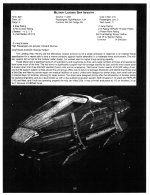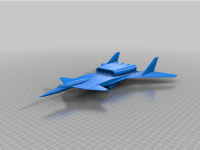Except ... there'a a problem with that approach.
Atmospheres on different worlds are different.
What is "awesome" aerodynamically on one world in one type of atmospheric composition and pressure will be totally inadequate on a different world with a different atmosphere. In other words, you can't just assume that a "large enough wing area" for one specific world gravity and atmospheric composition will work equally well for ALL worlds and ALL atmospheres.
This is where the fact that starships are meant to be interstellar and therefore travel to different worlds (with different surface gravity ratings and atmospheres) becomes a problem. You can't always rely on the "oh I've got wings, so I'm covered" excuse in all contexts. SOME contexts, sure ... but ALL contexts, no.
Now, granted ... Size: 8+ worlds will tend to have atmospheres (because that's how gravity works) ... but that's not my point. My point is that a variety of Size: 8+ worlds might not have the right KIND of atmosphere that lets you "get away with" the Large Enough Wing Area solution to the problem in all cases.





